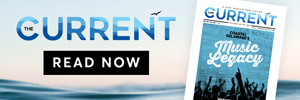Fifty years, 23 films, six actors. But the only number that matters this weekend is double-oh seven. “Spectre” marks the fifth decade of James Bond films, the highest-grossing film series of all time (at least until the new “Star Wars” installments are released). The British superspy has long outlasted the original 12 books of the Ian Fleming series on which the character was based and, thanks in large part to the latest incarnation by Daniel Craig, remains as popular as ever.
In honor of this rather momentous occasion, I thought it fitting to revisit the franchise’s legacy in honor of a series that has earned more than $6 billion worldwide and a spy who has killed 378 targets, and has introduced us to a cast of colorfully named Bond Girls, from Ursula Andress’ iconic Honey Ryder to Denise Richard’s ironic nuclear physicist Dr. Christmas Jones.
The Bottom of the Bond
Not all Bonds are created equal, and even though he had the looks and charm, Pierce Brosnan was never given the material to successfully shake off the campier latter-day Roger Moore films.
So it’s hard to choose among the tsunami-surfing sequences of “Die Another Day,” the seemingly never-ending “Tomorrow Never Dies,” or product-placement-heavy “The World is Not Enough.”
Despite Timothy Dalton’s best efforts to toughen up Bond’s image in the '80s with solid efforts such as “The Living Daylights” and “License to Kill” (more on this one later), the actor himself proved far too serious for those used to Moore’s tongue-in-cheek efforts after his long-running stint (seven films in 12 years).
Which brings me to the next cluster of overall misfires from Bond’s mounted scope. “A View to A Kill” drips with decade-specific artifacts (Grace Jones, Tanya Roberts, Duran Duran theme song) and marked the last film of Moore, who was 57 at the time and had long overstayed his welcome. Just two years earlier, he had made a mockery of the role, yodeling like Tarzan, ditching his signature tux for a clown suit (literally) and being upstaged by a camel in the best-forgotten “Octopussy.”
Targeting the top 10
Moore had been the reason Bond remained so relevant in the '70s, thundering in with a couple of its strongest offerings, no small feat following in the oversized footsteps of Sean Connery. But Craig deserves much credit as well for his short stint (“SPECTRE” in only his fourth), as his films have consistently landed near the top of any definitive ranking of Bond films.
10) From Russia With Love (1963): If you want to witness the source of the Bond iconography, it all starts in “Russia.” Skipping around various vistas in action set to a lush John Barry score, Sean Connery was comfortable in the role against a nasty cadre of SPECTRE villains and a pre-title action sequence that would become the staple for films to come.
9) You Only Live Twice (1967): This one is tops more for its depiction of the cool-headed bad guy, the quintessential, cat-scratching Blofeld (played by Donald Presence). The fact that it was scripted by legendary children's author Roald Dahl certainly adds to its overall funkiness.
8) License to Kill (1987): Those who complained the underrated “Quantum of Solace” was too dour should revisit “Kill” and its pitch-black plot that features a vengeance-fueled Bond who laid waste to many drug cartel members. It played to all the strengths Dalton brought as an actor, but veered heavily from the lighter material that marked all earlier outings.
7) Thunderball (1965): If this is adjusted for inflation, it’s the highest-grossing film of the franchise. And there is good reason: in his fourth round, Connery essentially owned Bond at this point. But two words cement this film into legendary status: jet packs.
6) The Spy Who Loved Me (1987): Moore may have finished his stint as Bond with a whimper, but he was at his height here, where ironically, he goes to the depths of the sea to stop a nuclear-weapon-wielding nutjob.
5) On Her Majesty’s Secret Service (1969): George Lazenby is but a footnote in the annals of Bond, and that is a shame, as evidenced by what is considered one of the best Bond films ever.
The role requires him to pine for his lost true love, which is atypical for our swinging hero, but Lazenby demonstrated he had the skill to handle a more vulnerable side of our hero.
4) Skyfall (2012): Cinematographer Roger Deakins gives the series the lush gloss it so long deserved, providing a rich backdrop to kiss off the series’ longstanding M (Judi Dench).
3) Dr. No (1962) Yes, it’s still a thrill to watch Honey Ryder emerge from the Caribbean Sea in her bikini, but there are many other iconic elements (the flame-throwing tractor, the nuclear-reactor showdown, the start of the Connery era) that elevate “No” into the highest tiers of the franchise.
2) Goldfinger (1964): For many, this was the pinnacle of all things Bond - the gals, the gadgetry, the gas-guzzling Aston Martin were all on prime display here, with Connery at the top of his game as well. It’s far from the literary world Fleming first created, but it was the template that launched countless imitators.
1) Casino Royale (2006): Connery purists may whine that he will be forever the lead, but there was something ruggedly durable about Daniel Craig’s take, which proved to be just rough enough around the edges to reintroduce us to a more human, but more feral version of the spy and made a world marked with many a green-screen backdrop feel urgent and real.



















































